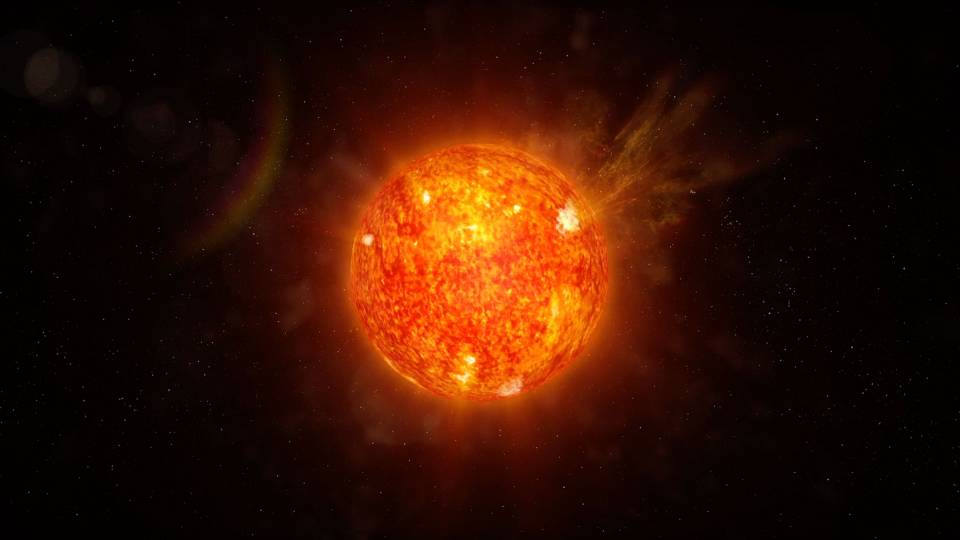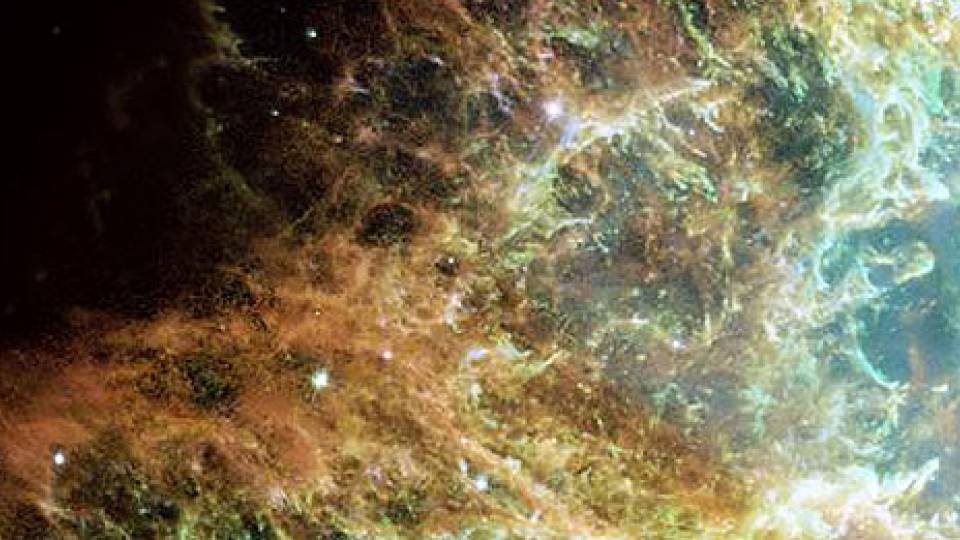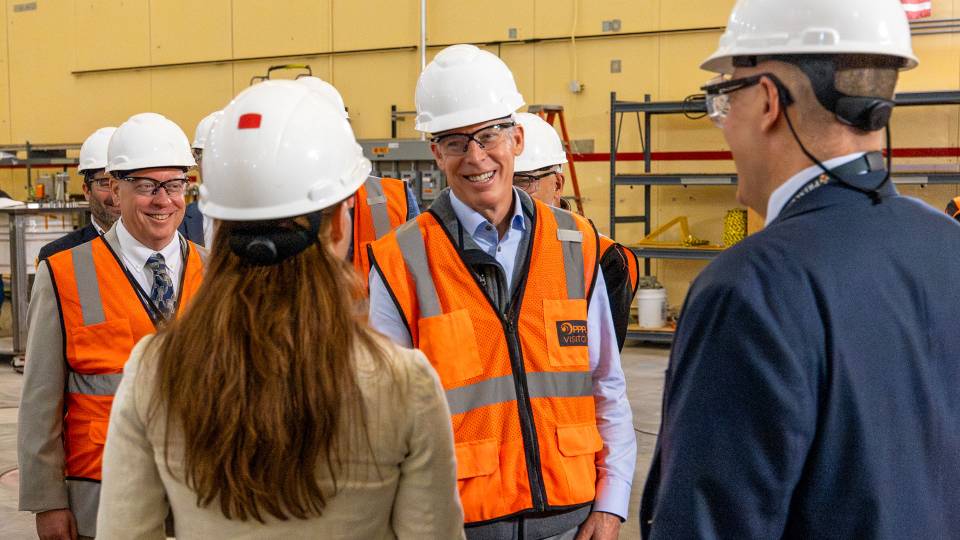Throughout the universe, supersonic shock waves propel cosmic rays and supernova particles to velocities near the speed of light. The most high-energy of these astrophysical shocks occur too far outside the solar system to be studied in detail and have long puzzled astrophysicists. Shocks closer to Earth can be detected by spacecraft, but they fly by too quickly to probe a wave’s formation.
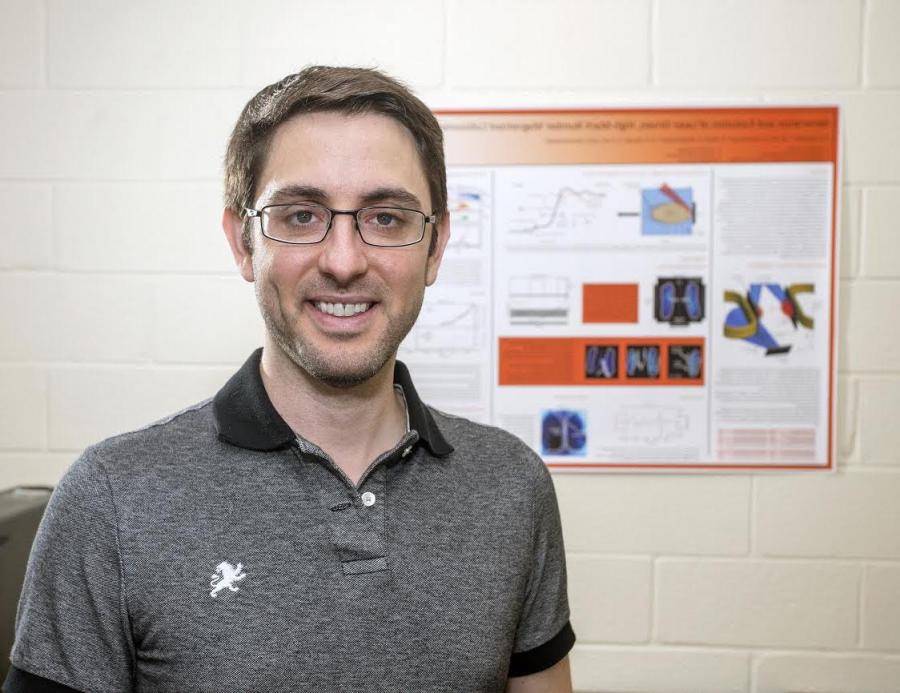
A team of scientists has generated the first high-energy shock waves, which propel cosmic rays and supernova particles to velocities near the speed of light, in a laboratory setting, opening the door to new understanding of these mysterious processes. Picture here is Derek Schaeffer, a physicist at Princeton University and the U.S. Department of Energy’s (DOE) Princeton Plasma Physics Laboratory (PPPL), and the lead author of a July paper in Physical Review Letters that outlines the experiments.
Now a team of scientists has generated the first high-energy shock waves in a laboratory setting, opening the door to new understanding of these mysterious processes. “We have for the first time developed a platform for studying highly energetic shocks with greater flexibility and control than is possible with spacecraft,” said Derek Schaeffer, a physicist at Princeton University and the U.S. Department of Energy’s (DOE) Princeton Plasma Physics Laboratory (PPPL), and lead author of a July paper in Physical Review Letters that outlines the experiments.
Schaeffer and colleagues conducted their research on the Omega EP laser facility at the University of Rochester Laboratory for Laser Energetics. Collaborating on the project was PPPL physicist Will Fox, who designed the experiment, and researchers from Rochester and the universities of Michigan and New Hampshire. “This lets you understand the evolution of the physical processes going on inside shock waves,” Fox said of the platform.
To produce the wave, scientists used a laser to create a high-energy plasma — a form of matter composed of atoms and charged atomic particles — that expanded into a pre-existing magnetized plasma. The interaction created, within a few billionths of a second, a magnetized shock wave that expanded at a rate of more than 1 million miles per hour, congruent with shocks beyond the solar system. The rapid velocity represented a high “magnetosonic Mach number” and the wave was “collisionless,” emulating shocks that occur in outer space where particles are too far apart to frequently collide.
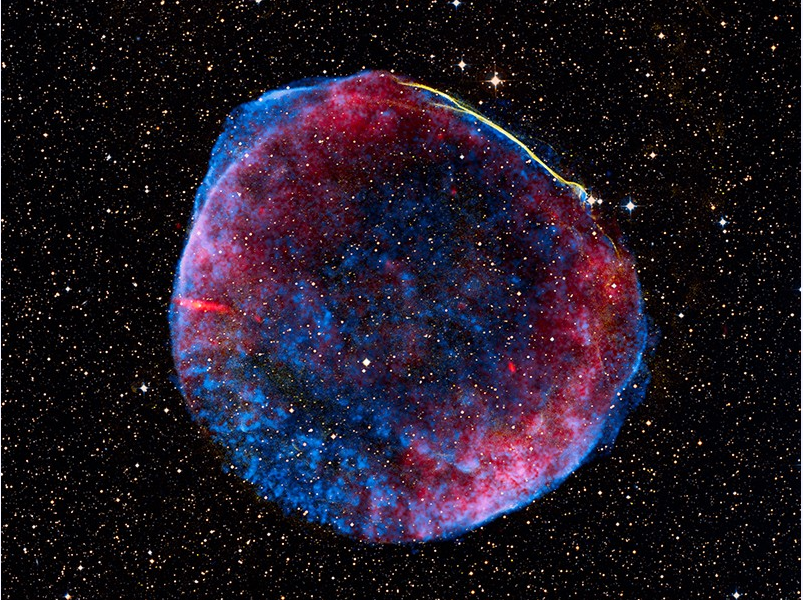
To produce the wave, scientists used a laser to create a high-energy plasma — a form of matter composed of atoms and charged atomic particles — that expanded into a pre-existing magnetized plasma. The interaction created, within a few billionths of a second, a magnetized shock wave that expanded at a rate of more than 1 million miles per hour, congruent with shocks beyond the solar system. Pictured here is an Image of a supernova remnant with a shockwave seen as thin blue boundary at the edge.
Discovery by accident
Discovery of this method of generating shock waves came about by accident. The physicists had been studying magnetic reconnection, the process in which the magnetic field lines in plasma converge, separate and energetically reconnect. To investigate the flow of plasma in the experiment, researchers installed a new diagnostic on the Rochester laser facility. To their surprise, the diagnostic revealed a sharp steepening of the density of the plasma, which signaled the formation of a high Mach number shock wave.
To simulate the findings, the researchers ran a computer code called “PSC” on the Titan supercomputer, the most powerful U.S. computer, housed at the DOE’s Oak Ridge Leadership Computing Facility. The simulation utilized data derived from the experiments and results of the model agreed well with diagnostic images of the shock formation.
Going forward, the laboratory platform will enable new studies of the relationship between collisionless shocks and the acceleration of astrophysical particles. The platform “complements present remote sensing and spacecraft observations,” the authors wrote, and “opens the way for controlled laboratory investigations of high-Mach number shocks.”
Support for this research came from the DOE Office of Science, the DOE INCITE Leadership Computing program, and the National Nuclear Security Administration, a semi-autonomous agency within the DOE.
PPPL, on Princeton University's Forrestal Campus in Plainsboro, New Jersey, is devoted to creating new knowledge about the physics of plasmas — a form of matter consisting of atoms and charged atomic particles — and to developing practical solutions for the creation of fusion energy. The Princeton Plasma Physics Laboratory is managed by the University for the U.S. Department of Energy’s Office of Science, which is the largest single supporter of basic research in the physical sciences in the United States, and is working to address some of the most pressing challenges of our time. For more information, visit science.energy.gov.


